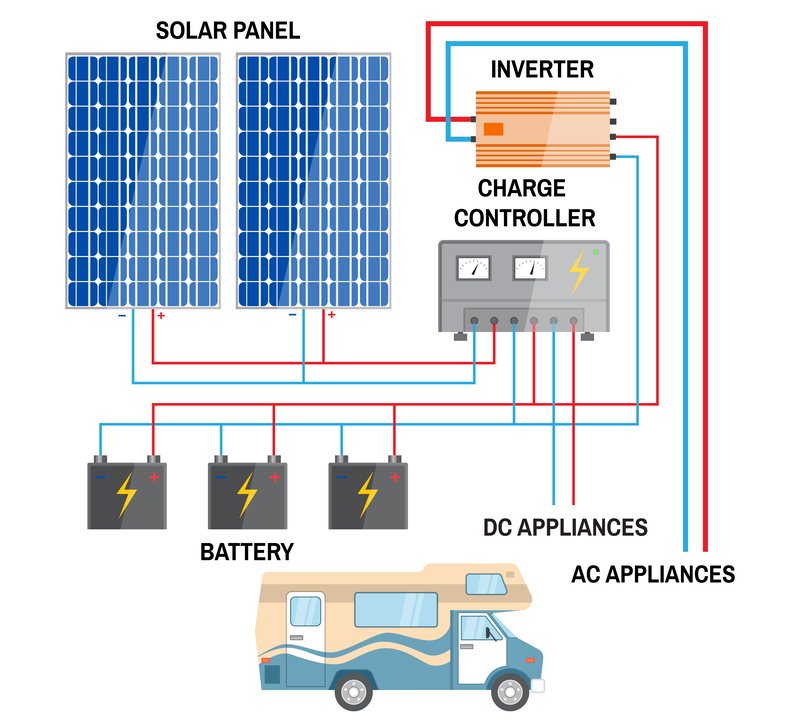You are super excited about your new RV solar panel on the roof—or portable RV solar suitcase—awesome! Having an energy source beyond the DC power that comes from your RV batteries provides not only a ton more comfort but can extend the time you spend boondocking considerably.
In theory. Everything depends on how much power you store in your batteries and how much power you use in your RV before recharging those batteries.
Related post: Top 5 Reasons to Not Buy RV Solar Panels
How do RV solar systems work? Here’s a simple step by step explanation.
A simplified step by step explanation of how an RV solar power system (also called photovoltaic system) works is as follows:
- Solar energy starts with sunlight — individual solar cells inside each solar panel convert rays from the sun to a direct electrical current i.e. DC power.
- Energy in panels travel through wires to solar controller — this DC electrical current travels from the solar panels through two wires (one positive and one negative) to a solar controller.
- Solar controller regulates flow of energy to the battery — the solar controller regulates the flow of the DC electrical current to the battery bank and prevents batteries from overcharging.
- RV batteries store power — RV batteries store the DC power. More battery capacity means more power is available for use in the RV. In essence, you have power in your RV until your battery bank is drained.
- RV inverter inverts DC power to AC power — RV batteries store DC power. Many things in an RV run off of DC power (lights, 12 volt fidge, USB outlets, propane water heater etc.) but to run your air conditioner or charge your laptop computer for example, you need AC power. That is what the inverter does. It inverts that DC power to an AC electrical current for power to 110 volt (same as 120v) outlets in your RV.
- AC power travels through a cable to the RV breaker box — the AC power from the inverter travels to the breaker box inside your RV that houses all of your fuses etc. If there is an unexpected power surge it will stop the flow of power to prevent damage or an electrical fire.
- Breaker box sends power to AC outlets — the AC power travels safely from the breaker box to your 110/120v outlets (not 12 volt or USB, that’s DC power!) in your RV.
And then, of course, we all live happily ever after in our RVs with an endless supply of power and an endless amount of amazing RV travel experiences wherever we want to travel to for as long as we want. Yes? Almost but not quite!
Related post: Can You Charge an RV Battery While Driving?
You also need to install a battery monitor and shunt to stay sane
One other important part of any solar power system is the battery monitor. Ya gotta know a few things as you use the system to not go completely insane. I added that in specific to my situation… don’t fret you’ll be fine!

A voltage battery monitor plus shunt gives you information on the state of charge in your batteries (i.e. how much DC power they have stored), real-time voltage, battery temperature, and estimated time how long the battery can support the current load i.e. how much crap you have running in your RV that is drawing power.
The shunt is important as it measures all energy flowing to and from your RV batteries to give accurate readings for how full your batteries are and for power consumption. A basic voltage-based monitor just gives readings for real-time battery voltage and estimated state of charge. You want and need to install a shunt also for your RV solar system.

